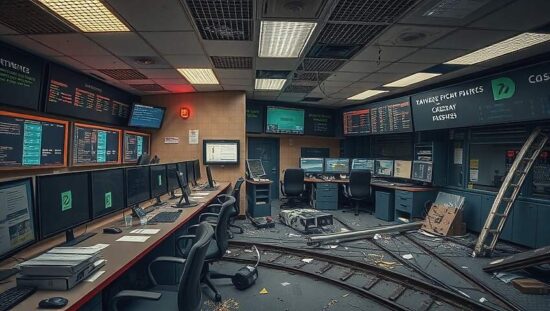Chaos at Hamburg Central Station Exposes Systemic Rail Infrastructure Concerns
Severe disruption to long-distance rail services across Germany erupted Wednesday following a critical failure at Hamburg Central Station, impacting thousands of travelers and raising uncomfortable questions about the state of the nation’s rail infrastructure. All ICE (Intercity-Express), IC (Intercity) and EC (EuroCity) trains passing through the station, including vital links to Copenhagen, Vienna and Zurich, experienced significant delays and cancellations.
Deutsche Bahn (DB), the national rail operator, attributed the chaos to a malfunction within the signaling system, impacting journey times by several hours. Passengers bound for Berlin were forced to depart from the outlying Harburg station, adding further inconvenience and exacerbating the already strained situation.
While DB maintains crews are working “under high pressure” to rectify the issue, the disruption is expected to persist into the night, potentially impacting overnight NJ (Nightjet) services connecting Hamburg to Vienna and Zurich. The scale of the impact suggests a problem far beyond a localized fault, highlighting a potentially wider issue with the maintenance and resilience of essential rail infrastructure.
Sources indicate that the damage originated during ongoing construction work between Hamburg Central Station and Altona, compounding the precarious situation and inviting scrutiny into the oversight and planning of these projects. The fact that the S-Bahn network remained unaffected further emphasizes the complexity of the problem and the specialized nature of the failed signalling technology.
Opposition parties are already seizing on the incident, accusing the government and DB of decades of underinvestment and deferred maintenance, leaving the rail network vulnerable to such failures. The incident risks further eroding public trust in DB’s ability to provide reliable and punctual service, particularly as the nation explores increased reliance on rail transport as a cornerstone of its climate goals. DB faces growing pressure to provide a transparent investigation into the root cause of the failure and a clear roadmap for swiftly upgrading the aging rail infrastructure.





